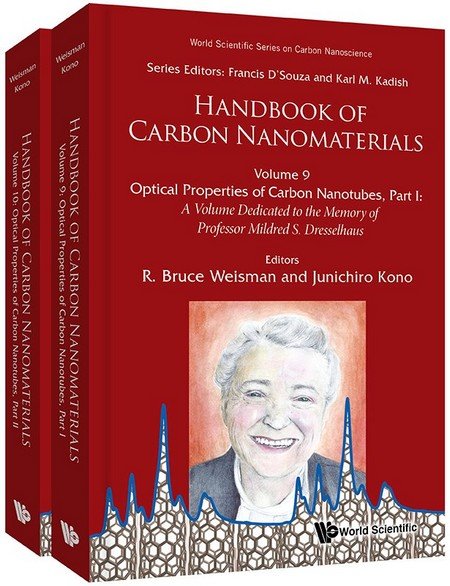Chapter 1: Introduction to Optical Spectroscopy of Single-Wall Carbon Nanotubes
This chapter presents an introductory tutorial overview of single-wall carbon nanotube (SWCNT) spectroscopy at optical wavelengths. Topics are treated assuming that the reader has little or no specialized background in order to prepare students and new investigators to access the deeper presentations found in later chapters of this two-volume set. We first describe the physical structures of SWCNTs, along with the electronic band properties arising from those structures. The simplest model for electronic interband transitions is then introduced as a framework for understanding experimental results. The next sections deal with the three most widely applied optical spectroscopies that involve those nanotube electronic transitions: photoluminescence, visible and near-infrared optical absorption, and resonance Raman scattering. A brief discussion follows on the excitonic nature of nanotube excited states and the spectral and photophysical signatures of excitons. Some other optical methods used in basic nanotube research are then presented. These are magneto-optical, Rayleigh scattering, and ultrafast time-resolved spectroscopies. We close by describing a sampling of the uses of carbon nanotube optical properties in some emerging biomedical and engineering applications.



